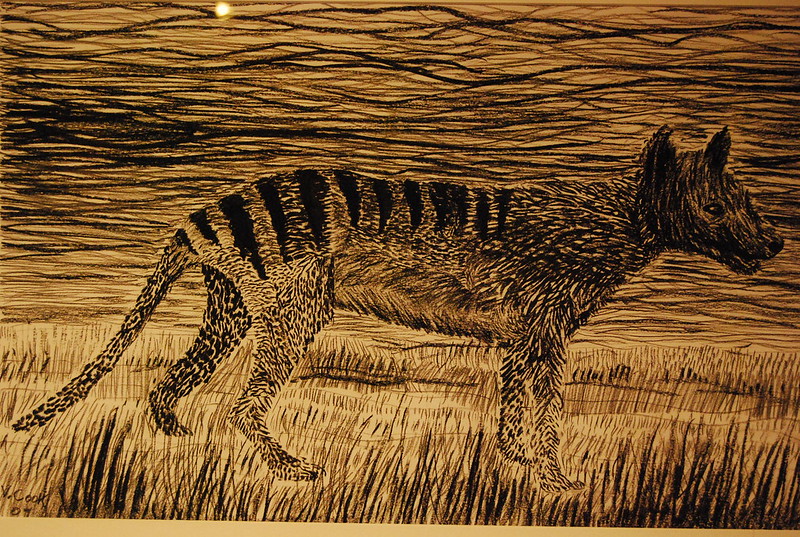The Guardian view on de-extinction: Jurassic Park may be becoming reality
By Editorial,
The Guardian
| 08. 19. 2022
We should be keeping endangered species alive rather than bringing animals back from extinction
"tasmanian tiger" by nicolas.boullosa is licensed under CC BY 2.0.
The last official sighting of a Tasmanian tiger in the wild occurred in 1930, when it was shot by a farmer. The marsupials, formally known as thylacines, were hunted to extinction by European settlers who considered them a threat to their sheep and poultry. However, the 6ft-long creatures may reappear if a group of biotechnologists have their way.
The company Colossal Biosciences, along with researchers from the University of Melbourne, plans to “de-extinct” the thylacine by using gene-editing technology. Australia has the fastest rate of mammal extinction in the world; disappearances are down to the arrival of foreign species and wildfires linked to the climate crisis. Scientists argue that in Tasmania the loss of the thylacine left the numbers of smaller marsupials unchecked, leading to over-grazing and threatening a fragile ecological balance.
If it all sounds like a plot line from Jurassic Park, then that is because the science behind the resurrection plan provided the movie’s inspiration. Last year Colossal, co-founded by a Harvard geneticist, raised...
Related Articles
By Jonathan Matthews, GMWatch | 12.11.2025
In our first article in this series, we investigated the dark PR tactics that have accompanied Colossal Bioscience’s de-extinction disinformation campaign, in which transgenic cloned grey wolves have been showcased to the world as resurrected dire wolves – a...
By Jenny Lange, BioNews | 12.01.2025
A UK toddler with a rare genetic condition was the first person to receive a new gene therapy that appears to halt disease progression.
Oliver, now three years old, has Hunter syndrome, an inherited genetic disorder that leads to physical...
By Simar Bajaj, The New York Times | 11.27.2025
A common cold was enough to kill Cora Oakley.
Born in Morristown, N.J., with virtually no immune system, Cora was diagnosed with severe combined immunodeficiency, a rare genetic condition that leaves the body without key white blood cells.
It’s better...
By Rachel Hall, The Guardian | 11.30.2025
Couples are needlessly going through IVF because male infertility is under-researched, with the NHS too often failing to diagnose treatable causes, leading experts have said.
Poor understanding among GPs and a lack of specialists and NHS testing means male infertility...




